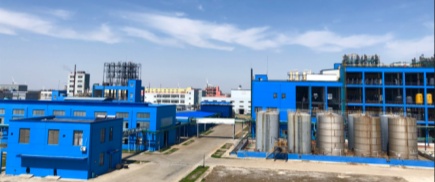Chinese Markets of BDO Has Entered the Era of Meager Profit
1.Chinese BDO accounts for half of Global production
In 2013, the global capacity of 1,4-butanediol (BDO) reached 2780 KTA, with output of about 1.61million tons and operating rate of 58%. The Asia Pacific region, especially China, is the main production region of BDO. In 2013, the capacity of BDO in China reached 1280KTA, accounting for 46% of the total.
Major BDO global manufactures include BASF, Dairen Chemical, Lyondell Basell, Ashland and Markor Chem, etc. The total capacity of this TOP 5 accounts for 44% of global capacity, as shown in Table 1.
In 2013, the global consumption of BDO was about 1.61million tons, with the main consumption fields such as THF, GBL, PU and PBT engineering plastic. Among them, the industrial chain of THF-PTMEG-PU fibre has the largest demands for BDO, which accounts for about 51% of total consumption.

2.The rapid expansion of Chinese BDO capacity
The research development of BDO in China began in the late 1960s, and because of small scale of production, Reppe method was mainly adopted. In 2000, Shandong Shengli Oilfield Chemical introduced the technology of maleic anhydride esterification with hydrogenation from Davy Mackee in the US, and put the first set of BDO device with scale of 10 KTA into production in China. After that, BDO industry had developed steadily. Because of gradually lower investment and technical threshold, Chinese BDOcapacity expanded quickly during 2009 to 2013, especially in 2013, the capacity growing more than 70% compared with 2012. In 2013, Chinese BDO total capacity was 1280KTA, and the output reached 470KTA with the operating rate of 37%.
The BDO domestic production process is mainly Reppe method and Maleic anhydride method, which accounted for 65% and 32% respectively and the Allyl alcohol method accounted for 3% (shown in Figure 2). Reppe method is a mature process with accessibilityraw material, stable quality product and low cost. But a lot of carbide slag which is difficult to dispose is produced. Besides, it brings serious pullition with a high equipment investment. Maleic anhydride method is a method with good product quality, small moisture content, low cost investment, valuable byproduct of THF and GBL which proportion are controlled, less wastes and less pressure on environmental protection. However, maleic anhydride and benzene are under the influence of oil price, causing more cost pressures.

In 2013, major production enterprises of BDO in China include Xinjiang Markor Chemical, Shanxi Sanwei, Nanjing BlueStar chemical, as shown inTtable 2.

Chinese BDO is mainly distributed in East China and Central China(Figure 3), which accounted for 28% and 26% respectively. In 2013 the new capacity mainly concentrated in East China, Northwest and North China.

New BDO projects in China will be more in the future, causing industrial overcapacity. Currently, new and planned projects publicly reported achieve 2630TKA, which is twice the capacity of 2013. And the new released capacity only in 2014 reached 670KTA, with a year-on year increase of 52%. As shown in Table 3.


3、Prudent Investment needed for Sluggish Markets
BDO consumption in China was about 480kt in 2013, mainly used in the production of THF, PBT, GBL and PU. The consumption structure is shown in figure 4. THF/PTMEG industry is still the largest consumption field of BDO, accounting for about 44%, followed by PU industry, accounting for 21%, and GBL and PBT industries accounted for 18% and 14% respectively.
THF/PTMEG has the most profits in the downstream fields of BDO, with higher operating rates, and the other fields are basically in a state of loss, with declining operating rates. It’s expected in the future that THF/PTMEG will be still the main growth driving force of BDO demands.

In the first half of 2014, BDO market in China had a sharp plunge, with basing sideway in the first quarter and diving in the second quarter. The average market price from January to July in 2014 was 12530 yuan / ton, with a decline of 13% compared with 14412 yuan / ton in the same period in 2013 , and a decline of 23% compared with 16191 yuan / ton in the same period in 2012. In January of 2014, the average market price was 13810 yuan / ton, but dropped to 9533 yuan / ton in July, with a drop of 31%, which is shown in Figure 5.
Plants using Maleic anhydride process are forced by cost pressures to stop production and the newly built device is also unable to produce as planned. Since 2012, maleic anhydride method has been under great cost pressures. Shanxi Sanwei, Nanjing BlueStar, and Shandong Zhongya gradually discontinued BDO device with maleic anhydride method. Two sets of maleic anhydride device which was newly built in 2013, including Huachen Energy and Yizheng Chemical Fiber also stopped after short trail.
Reppe method is losing its economic advantages, and especially in July it was even in a state of loss. Although the costs of raw materials for Reppe method are relatively low, with even a certain cost advantage. But with declining prices of BDO and slightly rising costs of raw materials, companies’ profit margins are shrinking.

Figure 5 BDO average price trends in China from 2013 to July 2014
Chinese BDO market has entered the growth stage, and the industry has become oversupplied, entering a low-profit time. There will be more new entrants, new sets of devices with larger scales, and more fiercely homogeneous competition. Moreover, the downstream demands will grow slower than the new capacity release, causing excessive capacity and declining operating rates. Therefore, companies need to be very careful about their investments.



